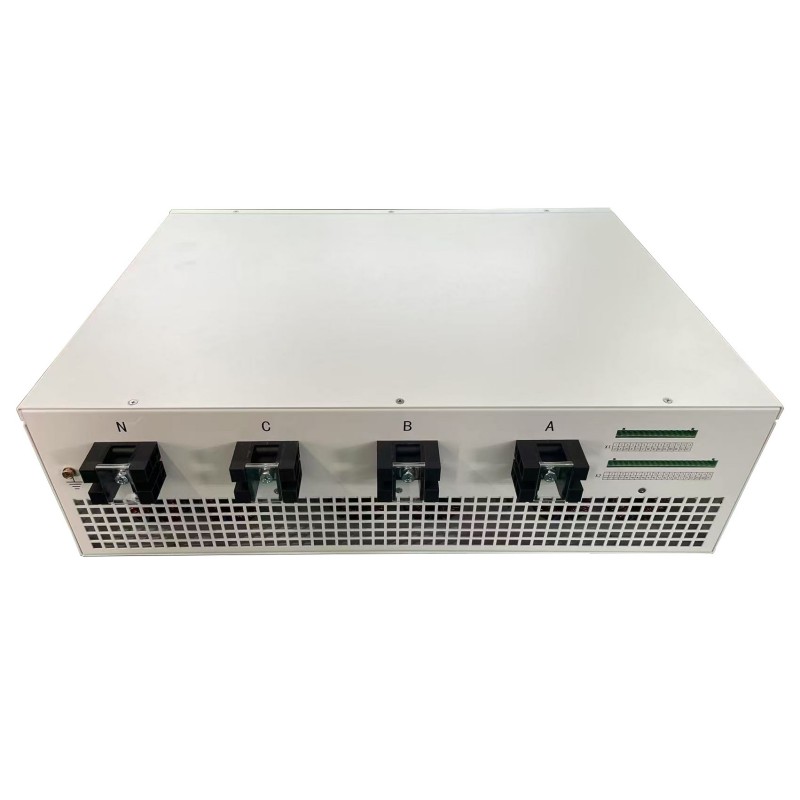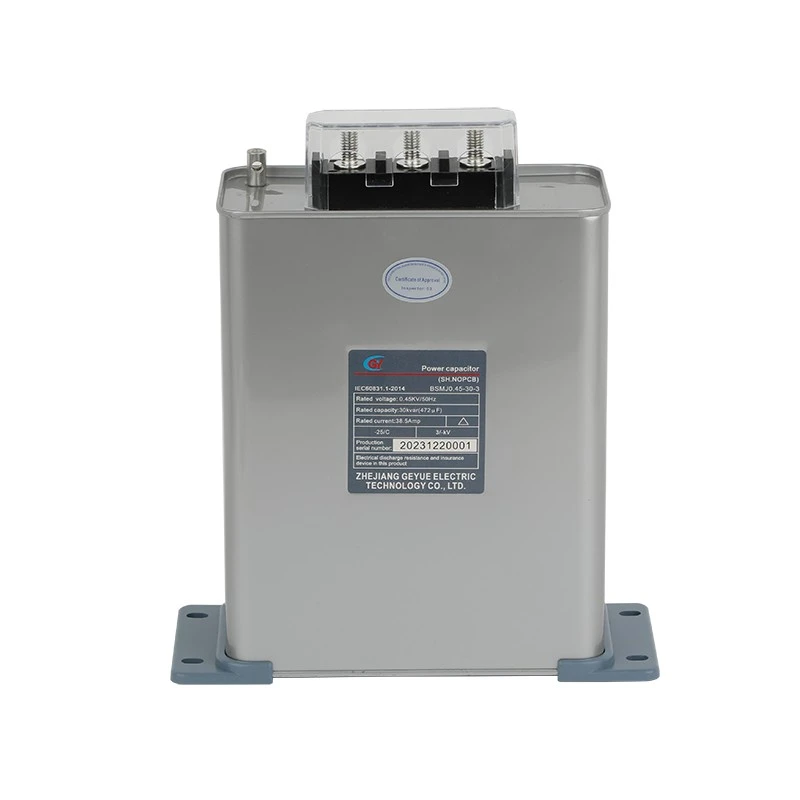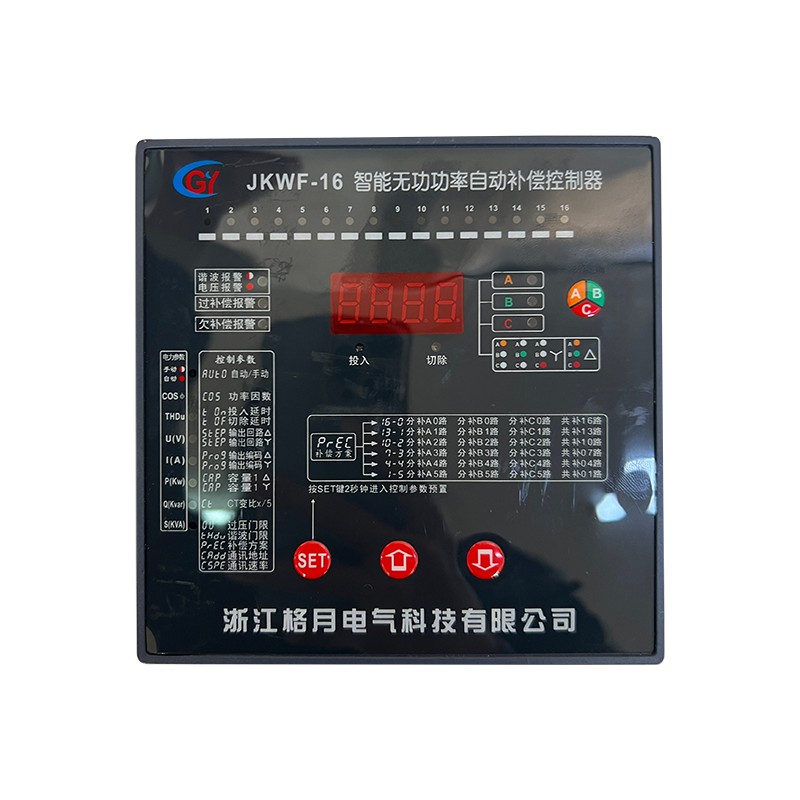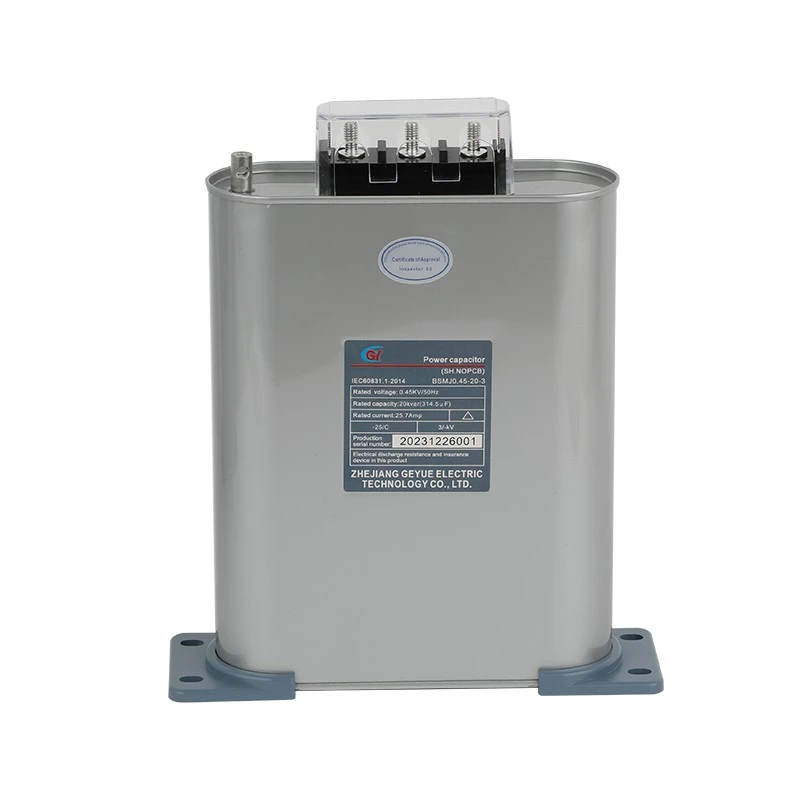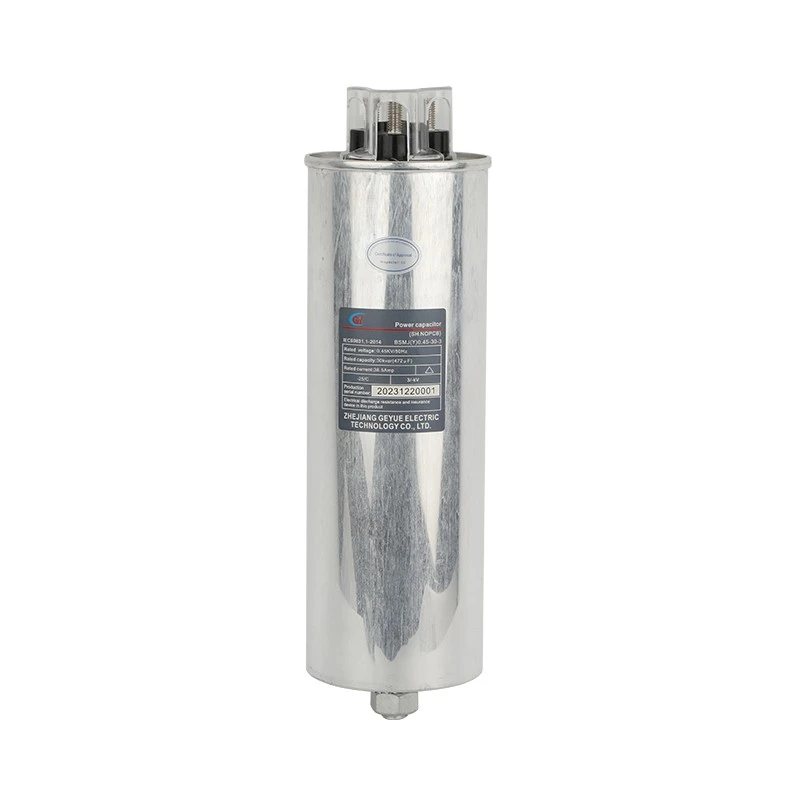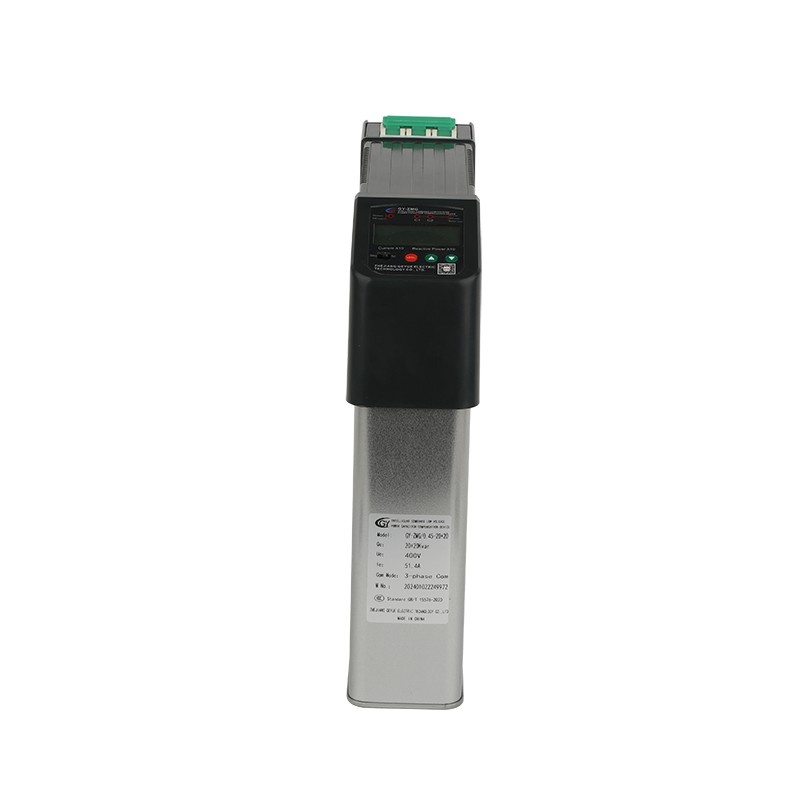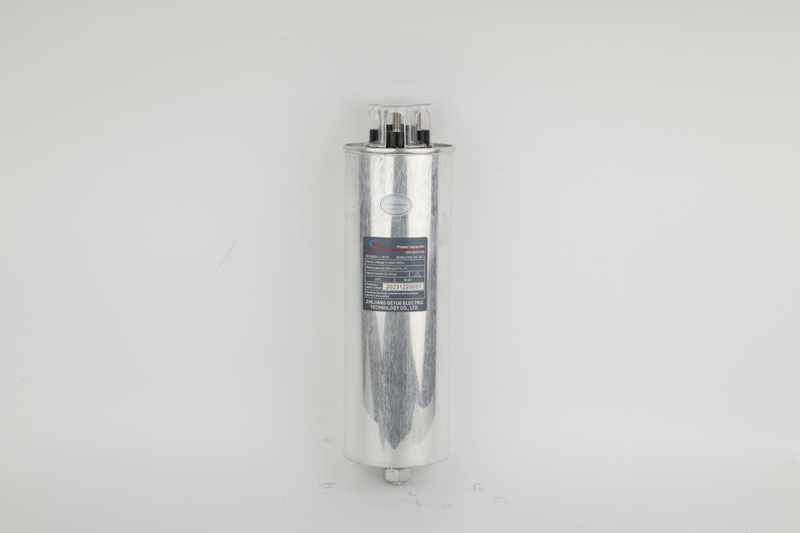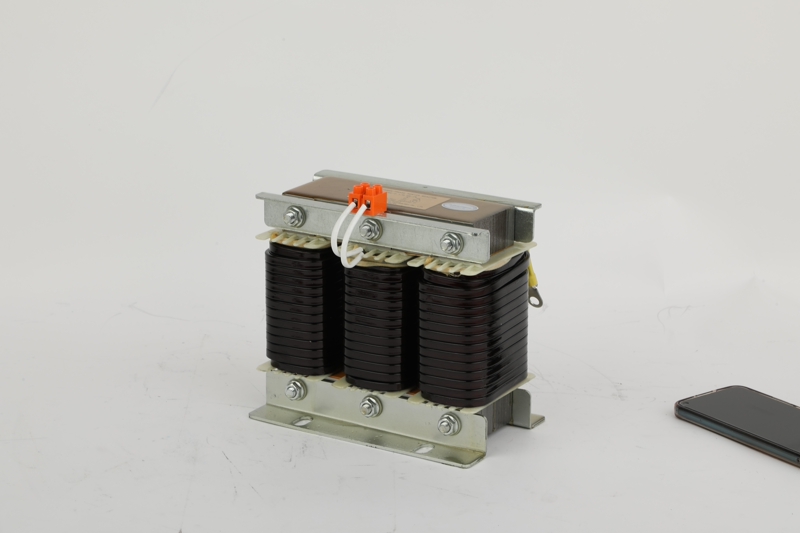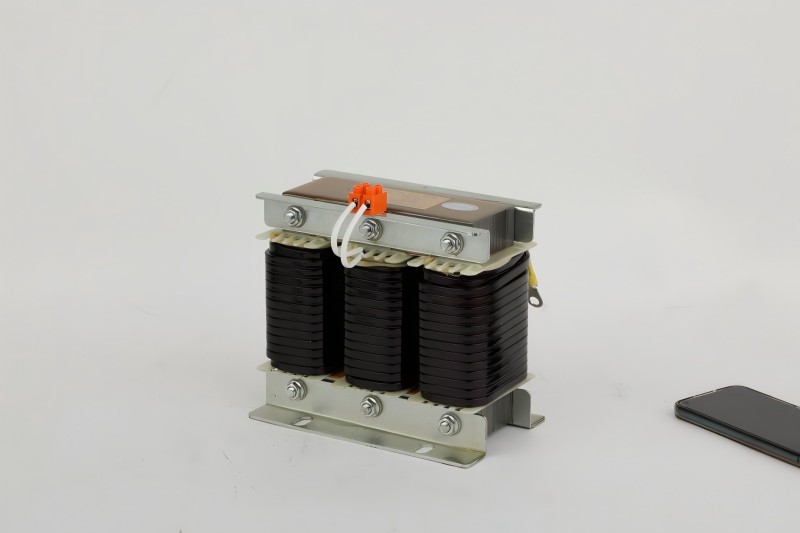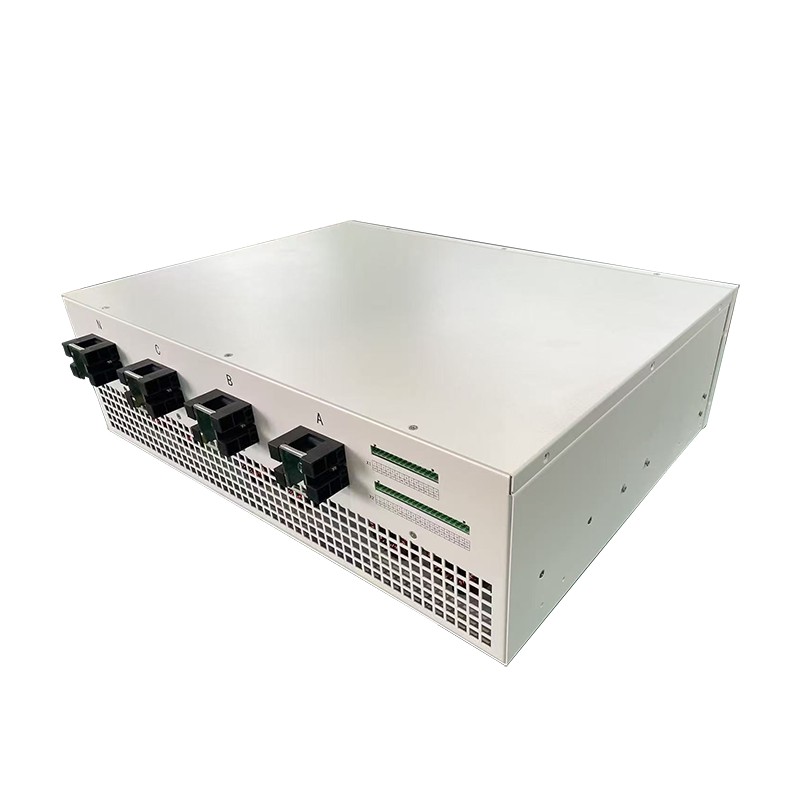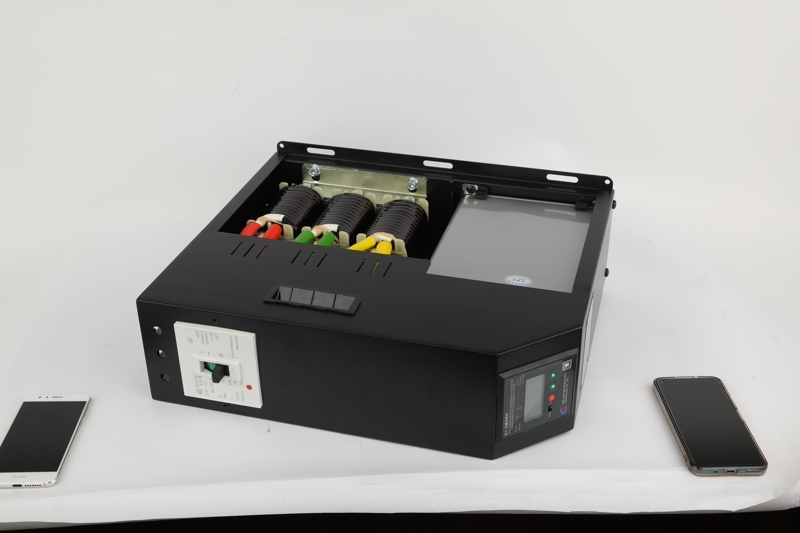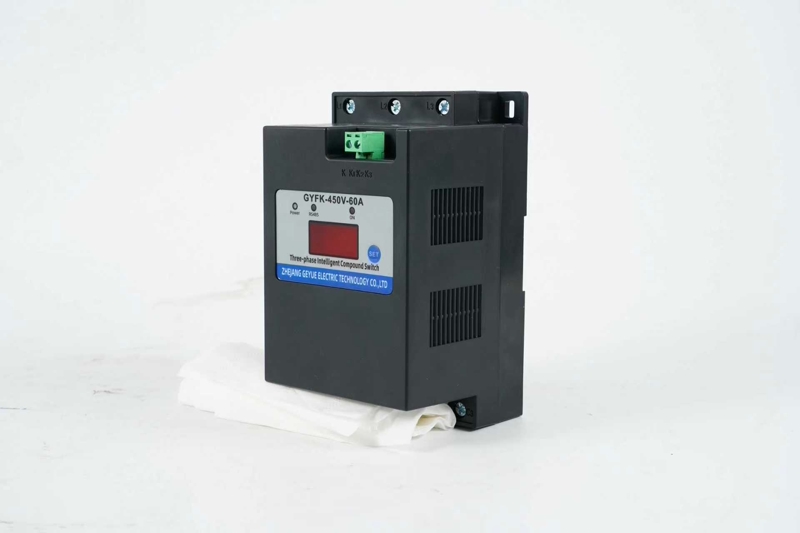Why Must Special Material Capacitor Cabinets Be Used in the Anti-Explosion Areas of Petrochemical Enterprises?
The production environment of petrochemical industries contains a large amount of flammable and explosive gases and dust, which places extremely high demands on the safety of low-voltage reactive power compensation electrical equipment. As a well-known expert in the field of reactive power compensation, Geyue Electric attaches great importance to the upgrading of low-voltage reactive power compensation equipment in extreme petrochemical scenarios. In the following text, Geyue Electric will delve into the special technical requirements for reactive power compensation devices in explosion-prone areas of petrochemical enterprises, systematically explain the potential risks of ordinary capacitor cabinets in flammable environments, and detail the material selection, structural design, and safety protection mechanisms of explosion-proof capacitor cabinets. The electrical engineers of our company, by comparing domestic and international explosion standards and typical accident cases, will further demonstrate the irreplaceable importance of special material capacitor cabinets in ensuring the safety production of petrochemical enterprises, and provide technical guidance for the selection of reactive power compensation equipment in hazardous areas.
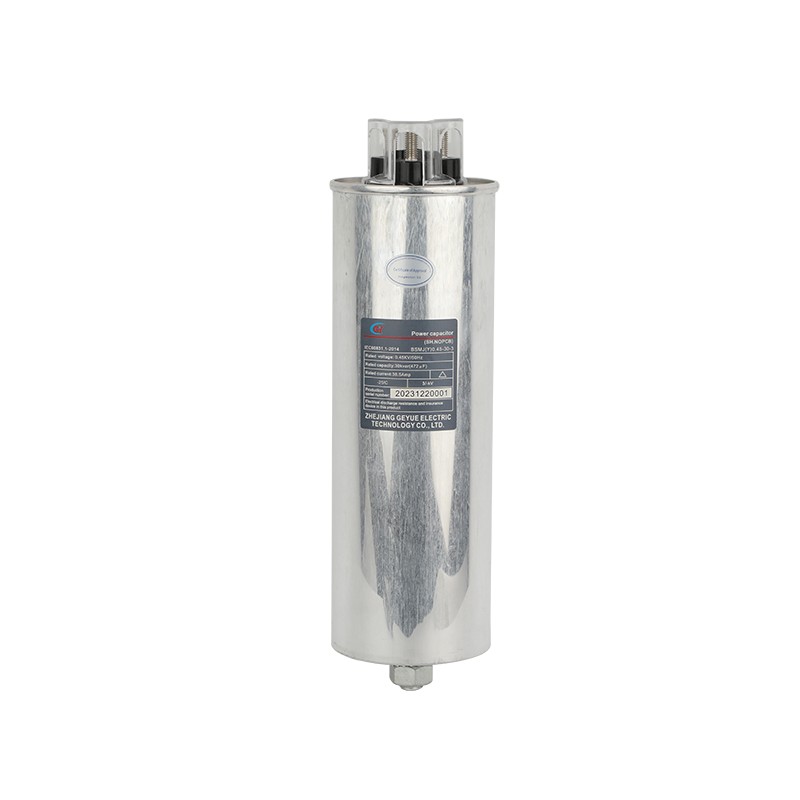
Analysis of the Characteristics of Explosive Hazardous Areas in Petrochemical Enterprises
In the petrochemical production process, the surrounding areas of key equipment such as distillation towers, reaction vessels, and storage tanks are defined as explosion hazardous areas by the International Electrotechnical Commission (IEC) standard 60079. These areas have long been exposed to volatile organic compounds such as benzene and olefins. The minimum ignition energy of these substances is as low as 0.2 millijoules, which is equivalent to one-thousandth of the spark energy in an ordinary capacitor cabinet. Therefore, we can conclude that under normal operating conditions, the trace sparks generated by partial discharge of the capacitor medium are sufficient to ignite the surrounding explosive mixture.
The production environment of petrochemical enterprises also has strong corrosive characteristics. The corrosion rates of process media such as hydrogen sulfide and chlorine gas on metal materials can be as much as 5-8 times that of ordinary industrial environments. According to an accident analysis report from a certain oil refinery, our company's technicians discovered that the conventional carbon steel capacitor cabinets, when used in an acidic gas environment for 18 months, the thickness of the cabinet decreased by 40%, and the structural strength significantly decreased. In the event of an internal arc fault, the cabinet was extremely prone to bursting.
The Potential Explosion Risk of Ordinary Capacitor Cabinets
In the market, traditional reactive power compensation capacitor cabinets do not take explosion-proof requirements into account in their design, thus presenting multiple safety hazards. When the capacitor elements are subjected to overvoltage or harmonic overload, the internal insulating oil may undergo thermal decomposition and generate combustible gas. When the gas pressure exceeds the limit that the shell can withstand, the rupture energy of the conventional aluminum shell can reach 200 millijoules, far exceeding the upper limit of 80 millijoules required for Class II gas environments.
During the process of capacitor switching, the arc sparks generated by the contactor's contact disconnection have a temperature exceeding 4000K. Test data shows that the arc energy of standard contactors when disconnecting a 400V circuit is sufficient to ignite all types of explosive gases. Moreover, electronic components such as power factor controllers may have overheated surfaces in fault conditions, and the temperature resistance level of ordinary plastic casings cannot meet the explosion-proof requirements of equipment with a T4 group surface temperature not exceeding 135℃.
Technical Features of Explosion-Proof Capacitor Cabinets
Special material capacitor cabinets that meet explosion-proof standards must adopt multiple safety designs. The structure of the cabinet is made of copper alloys or stainless steel with a copper content of less than 65%, which not only ensures mechanical strength but also suppresses friction sparks. The machining accuracy of the flameproof joint surface is controlled within 0.05mm to ensure that the internal explosion flames can be adequately cooled when passing through the joint surface gap.
The BSMJ series and BSMJ(Y) series capacitor units produced by our company adopt a dry full-film structure. The dielectric material is flame-retardant polypropylene film, and the self-extinguishing time is less than 10 seconds. Each phase of the capacitor is equipped with a pressure release device, which can release pressure directionally in case of internal faults to prevent the shell from cracking. All conductive components are subjected to passivation treatment, and the surface resistance is controlled below 1 MΩ, effectively preventing static electricity accumulation.
Key Material Selection and Process Requirements
The core materials of the explosion-proof capacitor cabinet must pass strict certification. The shell steel plate must meet the 022Cr17Ni12Mo2 stainless steel standard stipulated in GB/T 20878, and should show no rust even after 480 hours of salt spray test. The insulation support components use DMC granules with added aluminum hydroxide, and the ignition temperature of the hot wire is above 960℃.
The sealing system is made of fluororubber material, which can withstand the erosion of benzene-based solvents for a long time, and the permanent deformation rate during compression is less than 15%. The terminal connectors are made of silver-plated copper material, and the contact resistance change rate remains less than 5% after 1000 insertions and extractions. All exposed fasteners must meet the anti-loosening requirements of ISO 4029, and the torque attenuation during vibration testing does not exceed 10% of the initial value.
System Integration and Security Monitoring
A complete explosion-proof compensation system requires the integration of multiple protections. The temperature monitoring module continuously collects the hot spot temperature of the capacitor core. When it exceeds 85℃, it automatically cuts off the faulty branch. The hydrogen sensor continuously detects the gas concentration inside the cabinet. When it reaches 20% of the explosion lower limit, it triggers an alarm. The pressure wave detector can identify the initial pressure rise of the internal arc within the millisecond range, and work in conjunction with the rapid grounding switch to achieve fault isolation within 5 milliseconds.
The explosion-proof controller adopts an intrinsically safe circuit design, with the working voltage limited to below 24VDC and the energy of the storage components not exceeding 0.1mJ. The display unit transmits signals through optical fibers, completely eliminating the risk of electric sparks at the operation panel. The system transmits data through an ATEX-certified wireless module, avoiding the damage to the explosion-proof structure caused by the passage of cables.
A Comparison between Engineering Applications and Accidents
A comparative test conducted with a coastal petrochemical park that cooperates with our company revealed that the alkylation unit using ordinary capacitor cabinets experienced two cabinet flashover accidents during its three-year operation period. In contrast, the same type of unit equipped with explosion-proof capacitor cabinets maintained a zero-fault record. Our company's thermal imaging analysis showed that under the same load conditions, the maximum surface temperature of the explosion-proof cabinet was 22°C lower than that of the ordinary cabinet, effectively controlling the risk of heat ignition.
In our project of upgrading the ethylene cracking unit, the explosion-proof capacitor cabinet was equipped with a nitrogen positive pressure protection system to keep the internal oxygen concentration below 5%. This effectively eliminated the conditions for the ignition of combustible materials. This multi-layer protection design expanded the applicable area of the equipment from Zone 2 to Zone 1, significantly enhancing the reliability of the entire low-voltage reactive power compensation system and the power system.
Standards, Norms and Certification Systems
The international explosion-proof standard system strictly classifies equipment in hazardous areas. The IECEx certification requires explosion-proof capacitor cabinets to pass 500 temperature cycling tests without any deterioration in material performance. The EU ATEX Directive 94/9/EC stipulates that equipment must be marked with complete explosion-proof identifiers such as Ex db IIB T4 Gb, where IIB indicates suitability for ethylene gases and T4 means the surface temperature does not exceed 135℃.
The Chinese GB 3836 standard has added specific provisions for reactive power compensation equipment, requiring that explosion-proof capacitor cabinets must pass an internal fault ignition test. During the test, the cabinet is filled with the most flammable gas mixture, and an artificial capacitor breakdown fault is created to observe whether an external explosion is triggered. Only equipment that completely blocks the spread of the explosion can obtain an explosion-proof certificate.
Cost-Benefit and Life Cycle Analysis
Although the initial investment of explosion-proof capacitor cabinets is 40% - 60% higher than that of ordinary models, the overall lifecycle cost advantage is obvious. According to an economic analysis of a million-ton oil refinery, the annual average loss due to equipment failure of explosion-proof cabinets is only 7% of that of ordinary cabinets, and the maintenance cost is reduced by 65%. Considering the potential production halt losses caused by accidents (over 2 million yuan per day on average) and safety penalties (up to 5 million yuan per single incident), we can accurately infer that the actual economic benefits of the explosion-proof solution are more significant.
We can draw the conclusion that in the anti-explosion areas of petrochemical enterprises, special material capacitor cabinets must be used. This is determined jointly by the explosion characteristics of hazardous media and the inherent risks of electrical equipment. Explosion-proof capacitor cabinets achieve the lowest risk of explosion accidents through triple guarantees of material innovation, structural optimization, and intelligent monitoring. Geyue Electric, from the perspective of a provider of low-voltage reactive power compensation solutions, sincerely recommends that all petrochemical enterprises strictly implement explosion-proof standards when selecting equipment, and prioritize choosing professional manufacturers with complete certification qualifications to build a reliable reactive power compensation guarantee system for safe production. If you need a one-stop customized reactive power compensation solution for petrochemical scenarios, please consult Geyue Electric for professional assistance at info@gyele.com.cn.
- Can Cylinder Self-healing Shunt Capacitor Become the Ideal Choice for the Smart Grid Era?
- Apart from Saving Electricity Costs, What Value does Low-Voltage Reactive Power Compensation Bring to Enterprises?
- How does the Temperature Dependence of a Capacitor's Capacitance Value affect the Tuning Point of a Detuned Filter Circuit?
- Is There a Non-Invasive Way to Monitor the Internal Health of Power Capacitors, Such as Their Equivalent Series Resistance (ESR)?
- What Is the Concept of "Reactive Power Banking" or "Reactive Power Dispatch" in a Smart Grid Context?
- What Are the Recycling and Disposal Plans for Self-Healing Shunt Capacitors after the End of Their Life Cycle?

